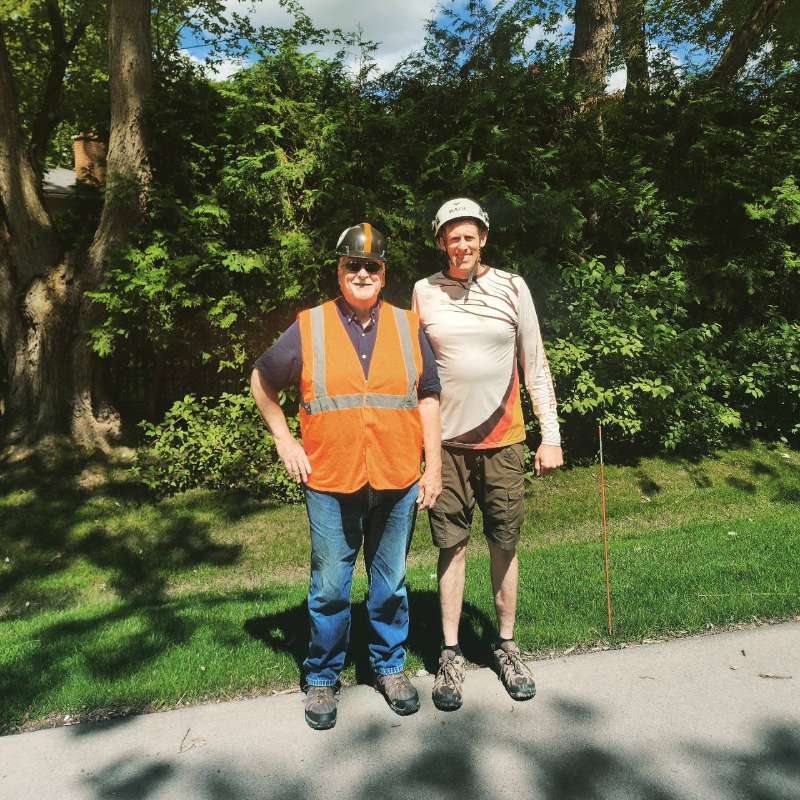
Imagine if an electrician was working at your home. Imagine if they said, “I feel like we should use XYZ wire for your stove and I feel like we should place the box for the wire in XYZ location, and I feel like we could get away with attaching it to the same circuit as your kitchen lights.”
This sounds a little bit dangerous. After all, don’t electricians have a code book which outlines what they can and can’t do. What if the electrician screws up? It might work in the short term but what about down the road. What kinds of problems could arise? At best, your stove doesn’t work. At worse, a house fire could occur.
The way electricians prevent situations like this by having a code book they follow which outlines all the potential electrical scenarios and how to appropriately address them.
How Do Arborists Do It?

Here in Ontario, there is no code book by which arborists must follow to carry out their work.
Some municipalities may self impose some standards but by and large the aforementioned comment still stands.
But there are standards in the tree industry. In our industry, the gold standard for safety is called ANSI Z133 and the gold standard for tree care practices is called ANSI A300 (these are U.S. standards as we don’t have as clear and comprehensive set of standards for either category here in Canada). Together these standards outline all the potential scenarios that a tree service may face so that they can make the most appropriate decision.
How does Accreditation Play Into Safety?
Let’s say a crew shows up to your house to work on a few trees. That will usually consist of somewhere between 2 and 4 people. Of those 2 to 4 people, who can work on your tree? The truth is — any one of them. They can even do so without the supervision of the other crew members.
None of them have to be well versed in safety standards or tree care standards. The only regulation is that all members of the crew wear proper safety equipment. There are regulations pertaining to working around hydro but in most situations this regulation is not applicable.
Even though wearing proper safety equipment is regulated, there is no regulation outlining that the work be done in a safe and proper manner. A worker could climb up the tree wearing all the proper protective equipment and still do their work unsafely. They could tie themselves off with a rope to a branch, one that a properly trained arborists may deem unsafe, but there are no rules to state otherwise.
They could even cut off a branch that could make the tree far less healthy, and still there is no regulation that restricts such actions.
And we wonder why tree work is considered one of the most dangerous professions in all of North America.
Questions Regarding Risks

To reduce these potential risks, hopefully the person working on the tree is an “ISA Certified Arborist” or has been through post secondary education for arboriculture. But once again, this isn’t a requirement.
In the ideal world, every member of the tree service company would be an ISA Certified Arborist from the receptionist, to the consulting arborist, to the crew lead, to even the ground worker cleaning up the branches; but quite often this just isn’t feasible.
Enter The World of Accreditation
Accreditation ensures that every staff person working for a tree company subscribes to the highest standards of tree work. Accreditation exists in the absence of industry regulations.
Our work is dangerous. Our work is also important. When done well, we can prevent major disasters from occurring. We can also help ensure trees live for generations to come. When done poorly, trees die prematurely. Or they fail and cause potentially irreversible damage to persons and property.
Important work deserves high standards of care.
Accreditation is an avenue that we at DeVos Tree Care take to ensure that we are living according to these high standards. It is the work of the accrediting body that our “feet are held to the fire” so that we follow through.
Want to work with an accredited company. Give us a call @ (905) 516-4407 today and we can help.






